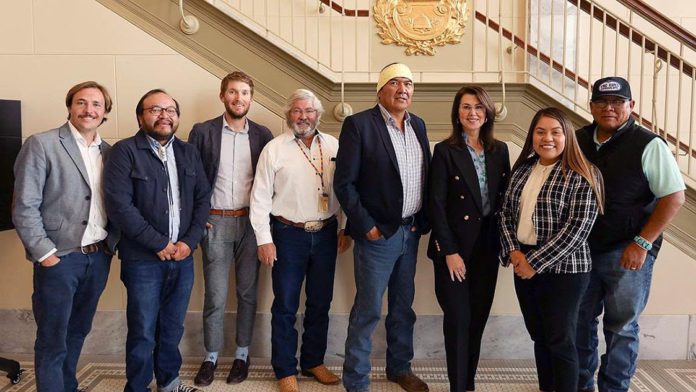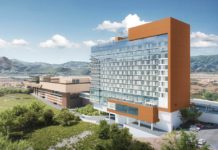
SALT LAKE CITY, UT – The 25th Navajo Nation Council Delegates recently met with Utah Lt. Gov. Deidre Henderson at the State Capitol in Salt Lake City, UT, to advance ongoing efforts to secure funding to pave an existing roadway between the communities of Navajo Mountain and Oljato. The road improvement project will also connect the community of Navajo Mountain to Blanding, UT.
Current efforts are focused on securing $4 million through the Utah State Legislature to complete an Environmental Impact Statement to move the project forward. The long-standing project will pave approximately 117 miles of road between Navajo Mountain and U.S. Route 163, providing critical access for Navajo residents who currently face transportation isolation and limited access to emergency services, educational opportunities, economic development, and a utility corridor for broadband, water, and power services.
“The community of Navajo Mountain is large, and these resources are necessary for the economic development of the area that will go toward supporting both Utah and the Navajo Nation,” said Navajo Council Delegate Shaandiin Parrish, Chair of the Budget and Finance Committee.
The Navajo Mountain and Oljato communities are located in the western portion of the Navajo Nation approximately 30 miles apart. The only paved route to get from one community to the other requires residents and other commuters to travel over 100 miles through rough terrain that often requires the use of four-wheel drive.
Utah State Sen. David P. Hinkins said he has been involved in the project since 2009 and every year the cost goes up. In 2021, the project costed $115 million compared to the current costs that range from $141 million to upwards of $200 million to pave the southern route. Sen. Hinkins told the group that allowing the Navajo Nation to operate a gravel pit in the area would reduce project costs by approximately 20 percent, but would also need congressional support.
“We need to be able to crush gravel on the Navajo Nation,” said Hinkins. “These materials are costly and currently must be brought in from off the Nation. The Department of the Interior doesn’t allow this on any Indian reservation. We need help from the Senate, House, and our Congress people to change this.”
Delegate Parrish told Lt. Gov. Henderson that the Navajo Nation, through the Office of the President and Vice President and the Navajo Nation Council, has been working with Arizona Congressman Eli Crane (R-AZ) to address this issue in Arizona, but the Nation needs the support of the Utah State Legislature to fix the issue in Utah. “Operating a gravel pit in Utah would not only benefit the Navajo Nation, but all tribes in Utah in developing roads,” said Delegate Parrish.
Council Delegate Herman Daniels Jr. noted that the process of identifying gravel pits starts at the chapter level through coordination with grazing permit holders. Lt. Gov. Henderson pledged her support to lobby for an act of Congress to address the gravel pit issue once the obstacles are addressed at the chapter level.
“I’m very supportive of this road. I understand the isolation and the need for it. Navajo Mountain is in Utah, and these are Utahans,” said Lt. Gov. Henderson. “It shouldn’t take several hours, traveling through another state to get to another part of our state. This should have been done a long time ago.”
Navajo Nation President Buu Nygren sent a letter to Utah Gov. Spencer Cox pledging $1 million to cover a portion of the $4 million cost of the project’s Environmental Impact Statement. Sen. Hinkins said he plans to run an appropriation request for the remaining $3 million.
Council Delegate Curtis Yanito reiterated that the project has been a long time coming and thanked Lt. Gov. Henderson and the legislators for their support of the Navajo Mountain Road Project.














































